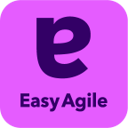SAFe & LeSS: Scaling Agile for Enterprise Success with Atlassian
Scale Agile practices seamlessly with SAFe and LeSS in the Atlassian environment. Overcome challenges and drive continuous delivery. Explore how Jira Align and Confluence complement SAFe and LeSS, empowering large organizations to align, plan, and execute Agile initiatives efficiently. Unlock the potential of Agile scaling through the power of Atlassian's collaboration and project management tools.
Get started!SAFe
SAFe (Scaled Agile Framework) provides a structured and hierarchical approach to scaling Agile, aligning teams across the organization to a common set of goals. It introduces the concept of Agile Release Trains (ARTs), which are dedicated teams of Agile teams that work together to deliver value in a coordinated manner. SAFe incorporates Lean principles and continuous feedback loops to ensure customer-centricity and optimize the flow of value.
Predictable Delivery and Program Increment Planning
SAFe's Program Increment (PI) Planning ensures predictability in delivery by aligning teams on a shared vision and plan for the upcoming iterations. This cadence enhances product quality and reduces risks associated with large-scale development efforts.
The 12 steps for implementing SAFe
1. Reaching the tipping point
2. Train lean-agile change agents
3. Train executives, managers, and leaders
4. Create a lean-agile centre of excellence
5. Identify value streams and ARTs
6. Create the implementation plan
7. Prepare for ART launch
8. Train teams and launch the ART
9. Coach the ART execution
10. Launch more ARTs and value streams
11. Extend to the portfolio
12. Sustain and improve
LeSS
LeSS (Large-Scale Scrum) takes a more minimalist and team-centric approach to scaling. It focuses on simplifying the organizational structure, promoting self-managing teams, and minimizing unnecessary processes. LeSS principles encourage direct communication, collaboration, and decentralized decision-making to foster adaptability and innovation.
Comparison of SAFe and LeSS
| Aspect | SAFe | LeSS |
|---|---|---|
| Focus | Scalability and Alignment | Simplicity and Empirical Process |
| Organizational Level | Enterprise-wide | Team-based |
| Roles | Hierarchical structure with specific roles | Minimalistic roles and hierarchy |
Guidance on Framework Selection
Selecting the most suitable scaling framework, whether it's SAFe, LeSS, or another, is a critical decision for an organization's Agile transformation. To determine the best fit for their specific needs, organizations should consider several factors:
Company Size
For larger organizations with multiple teams and complex interdependencies, SAFe might be a more suitable choice due to its structured and hierarchical approach. On the other hand, LeSS might be a better fit for smaller organizations with fewer teams, as it promotes a more minimalist and team-centric approach.
Industry and Project Complexity
Industries with high compliance requirements, such as healthcare and finance, may find value in SAFe's extensive guidance on governance and compliance. LeSS, with its focus on simplification, may be more appropriate for industries with less stringent regulatory constraints.
Existing Agile Maturity
Assess the organization's current Agile maturity level. If the organization is already practicing Scrum or Kanban at the team level, Scrumban could be an attractive transition to a scaled Agile framework. For those with advanced Agile practices and a willingness to embrace significant change, SAFe or LeSS might be more appropriate.
Organizational Culture
Consider the organization's culture and its readiness for change. SAFe's structured approach might be better received in organizations that are more accustomed to formalized processes, while LeSS's emphasis on self-management could be a better fit for organizations with a culture of empowerment and autonomy.
Integration with DevOps
Both SAFe and LeSS can be effectively integrated with DevOps practices, creating a seamless end-to-end Agile delivery pipeline. DevOps emphasizes continuous integration, continuous delivery, and automated testing, ensuring faster time-to-market and high-quality releases. When combined with SAFe or LeSS, DevOps complements the Agile framework by enabling efficient collaboration between development and operations teams. It streamlines the deployment process, reduces manual handoffs, and ensures faster feedback loops, leading to a more reliable and efficient software delivery process.
Scaling in Regulated Industries
Scaling Agile in regulated industries requires careful adaptation to meet compliance requirements while maintaining Agile values. Both SAFe and LeSS can be adapted to comply with strict regulations. To satisfy regulatory bodies, organizations should focus on transparency, documentation, and traceability. Engaging compliance experts and integrating compliance activities into the development process can ensure alignment with regulations without sacrificing Agile principles. Furthermore, SAFe's built-in compliance guidance and LeSS's focus on simplicity make them valuable options for regulated industries seeking to scale Agile effectively.
Challenges and Mitigation Strategies
Change Management
Resistance to change is common when transitioning to a scaled Agile framework. To address this, engage in effective change management practices, involve stakeholders early in the process, and communicate the benefits of Agile transformation to gain buy-in.
Siloed Mindset
Overcoming departmental silos and fostering collaboration can be challenging. Encourage cross-functional communication and collaboration through regular ceremonies, workshops, and team-building exercises.
Scaling Bottlenecks
As the organization scales, bottlenecks may emerge. Implement Lean principles to identify and address bottlenecks, visualize workflow, and apply the principles of flow to optimize the value stream.
Training and Coaching
Invest in comprehensive training and coaching for teams and leaders to ensure a shared understanding of the framework and its principles. Empower Agile coaches to guide teams through the transformation journey.
Unlocking Enterprise Agility with Jira Align
Discover the power of Jira Align in unlocking the full potential of SAFe and LeSS at the enterprise level. Jira Align seamlessly aligns Agile teams with strategic business goals, ensuring cohesive collaboration across the organization. For SAFe implementations, Jira Align's Program Increment (PI) Planning capabilities provide a centralized platform for synchronizing teams and defining objectives, leading to predictable delivery and improved program outcomes. In LeSS, Jira Align's flexibility and adaptability allow organizations to create self-managing teams and streamline decision-making, driving innovation and customer focus. Embrace Jira Align and unleash enterprise agility, scaling your SAFe and LeSS initiatives with ease, while ensuring alignment and success in your Agile transformation journey.
Software used for SAFe and LeSS:
Atlassian Jira
Jira Align
Atlassian Confluence
Bitbucket

Agile Hive | SAFe Structure ART PI Planning Roadmaps

Easy Agile Programs - PI Planning Program Board Dependencies

Unlock Agile at Scale with SAFe® & LeSS
Let catworkx help you boost your enterprise agility with Atlassian tools tailored for SAFe® and LeSS. Streamline collaboration, enhance visibility, and drive value faster!
✅Optimize agile workflows
✅Seamless Atlassian integration
✅Scale with confidence
The initial consultation is non-binding and free of charge.





.png?width=64&height=64&name=ITIL%20Foundation%20(2).png)





